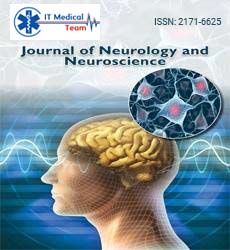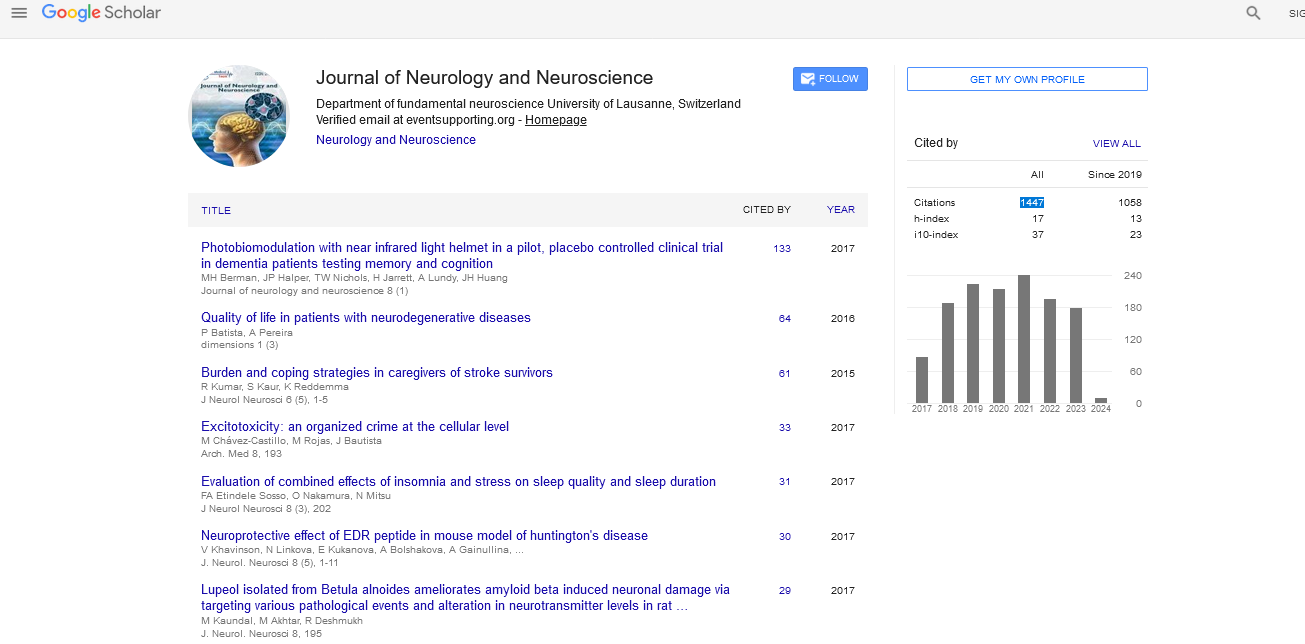Commentry - (2025) Volume 16, Issue 3
Correlation Between TCD Findings and Clinical Outcomes in Sickle Cell Disease
Hamila Mnelin*
Department of Medicinal and Health Products Sciences, University of Pisa, Pisa, Italy
*Correspondence:
Hamila Mnelin, Department of Medicinal and Health Products Sciences, University of Pisa,
Italy,
Email:
Received: 27-May-2025, Manuscript No. ipjnn-25-15715;
Editor assigned: 29-May-2025, Pre QC No. P-15715;
Reviewed: 12-Jun-2025, QC No. Q-15715;
Revised: 17-Jun-2025, Manuscript No. R-15715;
Published:
24-Jun-2025
Introduction
Sickle Cell Disease (SCD), a hereditary hemoglobinopathy, is associated with a markedly increased risk of cerebrovascular complications, particularly in children. Among the most significant advances in the management of this risk has been the use of Transcranial Doppler (TCD) ultrasonography, a non-invasive, accessible, and cost-effective tool for evaluating cerebral blood flow velocity and identifying patients at increased risk for stroke. The correlation between TCD findings specifically elevated Time-Averaged Mean Maximum Velocities (TAMMV) and clinical outcomes in SCD has been well established over the past two decades, with numerous studies demonstrating that abnormal TCD velocities serve as a strong predictor of both overt and silent cerebral infarction, as well as neurocognitive deficits. The landmark Stroke Prevention Trial in Sickle Cell Anemia (STOP trial) first provided conclusive evidence of this relationship, showing that children with SCD and TAMMV ≥ 200 cm/s in the Middle Cerebral Artery (MCA) or Internal Carotid Artery (ICA) had a more than tenfold increased risk of stroke compared to those with lower velocities. In this trial, children identified with abnormal TCDs who received chronic red blood cell transfusions saw their stroke risk reduced by over 90%, demonstrating not only the prognostic value of TCD but also its therapeutic impact when incorporated into prevention protocols. Further evidence from the STOP II trial confirmed that discontinuation of transfusions in patients whose velocities normalized could result in recurrence of high velocities and, consequently, recurrence of stroke risk, reinforcing the dynamic relationship between TCD results and clinical management decisions [1].
Description
Importantly, the relationship between TCD findings and clinical outcomes extends beyond overt strokes. Several studies have demonstrated that elevated TCD velocities correlate with silent cerebral infarcts (SCIs), which occur in approximately 30% of children with SCD by the age of 14 and are associated with significant long-term consequences including poor academic performance and reduced IQ. The Silent Infarct Transfusion (SIT) Trial revealed that children with SCIs had a higher likelihood of abnormal or conditional TCD findings compared to those without such lesions, suggesting that elevated cerebral blood flow velocity reflects an underlying hemodynamic stress and cerebrovascular insufficiency that predisposes to tissue injury even in the absence of clinical symptoms. Moreover, TCD abnormalities are increasingly being linked to neurocognitive impairment in children with SCD. It showed that higher TCD velocities were associated with lower full-scale IQ scores, and this relationship persisted even after adjusting for socioeconomic and demographic factors. This suggests that the pathophysiologic process leading to increased flow velocities—likely reflecting chronic anemia, hypoxia, and vascular remodeling—may contribute to progressive cerebral dysfunction over time [2].
Several hematologic and physiologic factors have been found to influence TCD velocities and, consequently, clinical outcomes in SCD. Lower hemoglobin levels, higher reticulocyte counts, elevated lactate dehydrogenase (LDH), and lower oxygen saturation have all been associated with higher cerebral blood flow velocities, supporting the theory that chronic hemolytic anemia leads to compensatory cerebral hyperemia. A study by Nichols observed that each 1 g/dL increase in hemoglobin was associated with a significant reduction in TCD velocity, suggesting that hemoglobin concentration is inversely related to stroke risk via its impact on cerebral hemodynamics. It demonstrated that low nocturnal oxygen saturation correlated with elevated TCD velocities, indicating that hypoxia may also contribute to cerebrovascular instability in SCD patients. These associations support the utility of TCD not only as a screening tool but also as a dynamic biomarker that reflects the underlying disease severity and physiological stressors contributing to cerebrovascular risk [3].
The clinical utility of TCD extends into monitoring response to therapy, particularly in patients on chronic transfusion or hydroxyurea therapy. Studies have shown that both treatments can reduce TCD velocities and thereby lower stroke risk. In the TWiTCH trial, children with abnormal TCD velocities on transfusion therapy who were transitioned to hydroxyurea maintained normal TCD values and did not experience strokes, suggesting that hydroxyurea, when dosed appropriately, can be as effective as transfusion in maintaining cerebrovascular stability in select patients. Additionally, hydroxyurea has been associated with improved oxygenation and reduced hemolysis, both of which are linked to lower TCD velocities, supporting its broader role in modulating stroke risk beyond its hematologic benefits. The value of TCD in this context is not limited to children. Although most studies have focused on pediatric populations, emerging data suggest that adults with SCD may also benefit from TCD monitoring, particularly those with a history of stroke, SCI, or elevated white matter hyperintensity burden on MRI. While standardized TCD thresholds for adults have not been firmly established, initial findings suggest a similar relationship between elevated velocities and increased cerebrovascular risk, warranting further investigation and potentially wider adoption in adult care protocols [4].
Despite its clear benefits, the widespread implementation of TCD screening faces several challenges, particularly in resource-limited settings. TCD is operator-dependent, and adequate training is essential to ensure consistent and accurate results. In low-income countries where the burden of SCD is highest such as in sub-Saharan Africa lack of trained personnel and equipment remain major barriers to widespread screening. However, pilot studies in Nigeria, Ghana, and Kenya have demonstrated that TCD screening can be successfully implemented in these contexts with appropriate training programs and support, leading to improved identification of high-risk children and initiation of preventive therapy. This underscores the importance of integrating TCD into global health strategies for SCD and investing in capacity building to expand access to this life-saving tool [5].
Conclusion
The correlation between TCD findings and clinical outcomes in sickle cell disease is robust, multifaceted, and clinically actionable. Elevated cerebral blood flow velocities on TCD are strongly predictive of overt stroke, silent infarction, and neurocognitive deficits, and are influenced by hematologic and physiologic parameters that reflect disease severity. TCD serves not only as a screening modality but also as a monitoring tool that can guide treatment decisions, evaluate therapeutic response, and improve long-term outcomes. Its incorporation into routine care for children with SCD has transformed stroke prevention, reducing the incidence of primary strokes by over 90% in appropriately managed patients. While challenges remain in ensuring global access to TCD, especially in resource-poor regions, its role in comprehensive SCD care is unequivocal. Continued research is needed to refine its use in adult populations, optimize thresholds, and expand its integration with other imaging and clinical tools, but its current value in pediatric stroke prevention is one of the most significant advancements in the management of sickle cell disease.
Acknowledgment
None.
Conflict of Interest
None.
References
- Adams RJ, McKie VC, Hsu L, et al. Prevention of a first stroke by transfusions in children with sickle cell anemia and abnormal results on transcranial Doppler ultrasonography. New Eng J Med. 1998;339(1):5-11.
Google Scholar, Cross Ref, Indexed at
- DeBaun MR, Armstrong FD, McKinstry RC, et al. Silent cerebral infarcts: a review on a prevalent and progressive cause of neurologic injury in sickle cell anemia. Blood, Journal Am Soc Hematol. 2012;119(20):4587-4596.
Google Scholar, Cross Ref, Indexed at
- Nichols FT, Jones AM, Adams RJ. Stroke prevention in sickle cell disease (STOP) study guidelines for transcranial Doppler testing. J Neuroimag. 2001;11(4):354-362.
Google Scholar, Cross Ref, Indexed at
- Lagunju I, Sodeinde O, Brown B, et al. Transcranial Doppler ultrasonography in children with sickle cell anemia: clinical and laboratory correlates for elevated blood flow velocities. J Clin Ultrasound. 2014;42(2):89-95.
Google Scholar, Cross Ref, Indexed at
- Bernaudin F, Verlhac S, Arnaud C, et al. Impact of early transcranial Doppler screening and intensive therapy on cerebral vasculopathy outcome in a newborn sickle cell anemia cohort. Blood, Journal Am Soc Hematol. 2011;117(4):1130-1140.
Google Scholar, Cross Ref, Indexed at





